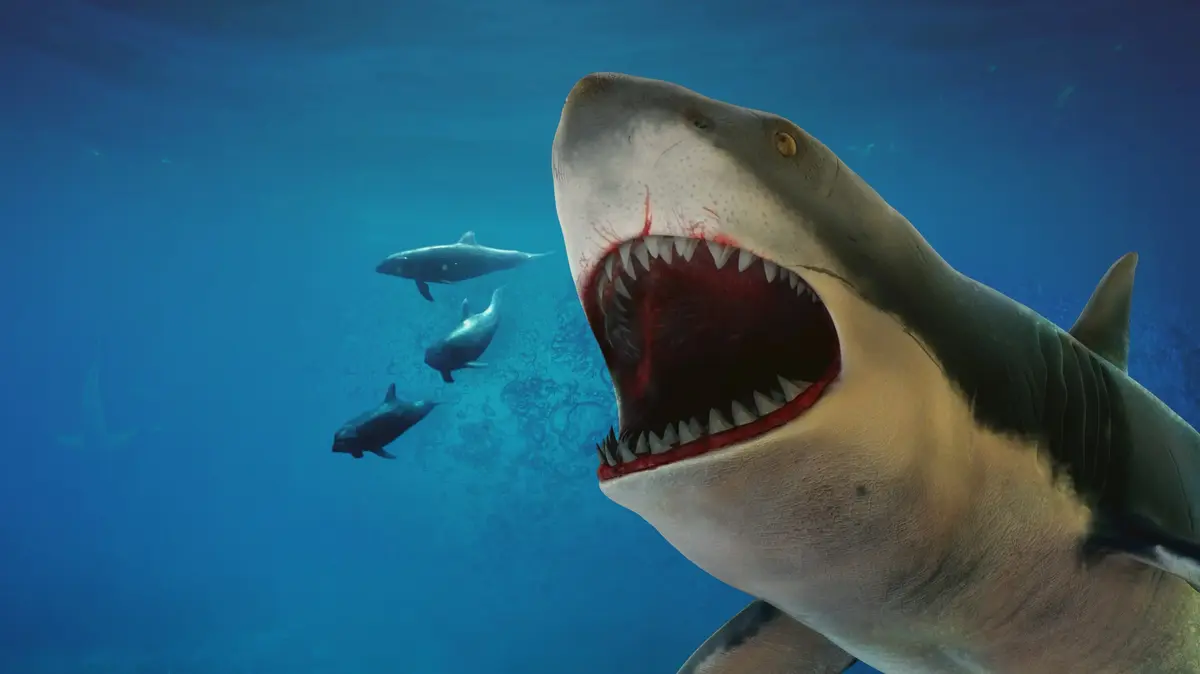A bite mark on a terrifying white shark: A monstrous prehistoric shark still alive?
A huge bite mark that appeared on a giant white shark evoked terror and speculation that the prehistoric monster "Maglodon" was still living in the ocean waiting to attack
Not to be missed
12/01/2022
Wednesday, 12 January 2022, 00:31 Updated: 00:50
Share on Facebook
Share on WhatsApp
Share on Twitter
Share on Email
Share on general
Comments
Comments
Horror in the Deep - Trailer (Tulip Entertainment)
Some experts believe that a huge scar found on a large moth shark may imply that one of the most powerful prehistoric predators in the world, the Magellan, is still alive and patrolling the depths of our oceans in search of prey.
Diver Jalil Najpov, 40, spotted the 4.5-foot-long shark swimming in front of Isla Guadeloupe in Mexico with bite marks on its side, sparking controversy as to their origin.
While some marine experts are trying to figure out why another shark bit its teeth aggressively at its species, others have theorized that it is not a bite from another large shark - but a much larger creature than a shark - the prehistoric monster from Glodon.
More on sharks
A shark vomited a human arm in front of hundreds of spectators and solved a murder mystery
To the full article
The image that provoked the storm
View this post on Instagram
A post shared by DISCOVER SHARKS (@discoversharks)
Rare record: An alligator shark attacked him by surprise and bit him in the leg
Watch the rare documentation: "Half-eaten zombie shark" continues to hunt
Starting a year with a huge sale on STINGTV for a limited time
The Daily Mirror reported that Jalil's post on Instagram led to speculation that the scar may have come from a bite from Maglodon, a species of ancient shark that is considered one of the largest and most powerful predators that ever lived.
Jalil said: "I was really surprised because in my life I have never seen anything like it."
To understand the source of the bite, Mr. Najpov turned to get an opinion from Dr. Tristan Gutridge, who heads the marine association Saving the Blue. In a report published on Express.co.uk he said: The location and severity of the injury.
Although mating scars can be quite disgusting, they are more superficial than those seen in a shark.
The shape of the scar, in my opinion, indicates a bite from another shark. "
Another researcher, Michael Dumayer, examined: "I'm sure it's a competitive aggression. I keep hearing colleagues describe such behavior as territorial aggression, but these migratory sharks do not have traditional territory. On the other hand, they also do not tolerate their species, except in rare cases where There seems to be some social connection between certain individuals (documented in South Australia). "
NECN News Report:
View this post on Instagram
A post shared by Jalil Najafov (@jalilnajafov)
70 million people watched this video - the proof that the Goldon is still alive
Officially the Magellan is an extinct animal, as no actual evidence has been found that could indicate that this creature still exists.
The most common fossils archaeologists have found are of the prehistoric creature's teeth, which are larger than any shark's teeth they have ever seen.
This indicates that the Magellan is much larger than any shark in existence today.
A fossilized tooth of Maglodon versus the tooth of an amethyst shark (Photo: ShutterStock, Mark_Kostich)
The Megalodon shark was an ancient sea giant, a formidable monster shark of enormous size, considered the largest shark that ever lived (also the largest fish in Earth history), and unquestionably ruled the oceans about 23 to 3.6 million years ago - then extinct .
The word glodon originates from Greek, where the words "megs" (you know the word "mega", big) and "udon" together mean "big teeth" or "big tooth".
Because the sharks have no bones, no bone fossils were left of it, but huge teeth were found, about 20 centimeters long each.
According to the tooth remains of this sea monster, it seems that this huge shark was about 20 meters long and even longer.
The estimated weight of this horrible monster was 13 times the weight of the giant white gourd of today, and 6 times the weight of the dinosaur T-rex.
Tourism
news
Tags
Sharks
shark

